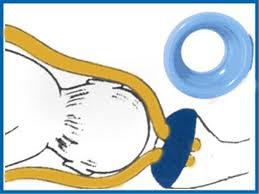Vaginal progesterone, cerclage or cervical pessary for preventing preterm birth in asymptomatic singleton pregnant
women with a history of preterm birth and a sonographic short cervix.
Reference: Ultrasound Obstet Gynecol 2013; 41: 146–151 Published online 17 January 2013 in Wiley Online Library (wileyonlinelibrary.com). DOI: 10.1002/uog.12300
Z. ALFIREVIC*, J. OWEN†, E. CARRERAS MORATONAS‡, A. N. SHARP*, J. M. SZYCHOWSKI§
and M. GOYA‡
*Department of Women’s and Children’s Health, Institute of Translational Medicine, University of Liverpool, Liverpool, UK; †Department of Obstetrics and Gynecology, Maternal-Fetal Medicine Division, University of Alabama, Birmingham, AL, USA; ‡Maternal Fetal Medicine Unit, Department of Obstetrics, Hospital Universitari Vall d’Hebron, Universitat Autonoma de Barcelona, Barcelona, Spain; §Department of Biostatistics, University of Alabama, Birmingham, AL, USA
and M. GOYA‡
*Department of Women’s and Children’s Health, Institute of Translational Medicine, University of Liverpool, Liverpool, UK; †Department of Obstetrics and Gynecology, Maternal-Fetal Medicine Division, University of Alabama, Birmingham, AL, USA; ‡Maternal Fetal Medicine Unit, Department of Obstetrics, Hospital Universitari Vall d’Hebron, Universitat Autonoma de Barcelona, Barcelona, Spain; §Department of Biostatistics, University of Alabama, Birmingham, AL, USA
ABSTRACT
Objective To compare the outcome of pregnancy in cohorts of women with singleton pregnancy and history of preterm birth and sonographic short cervix managed with different treatment protocols, namely cerclage, vaginal progesterone or cervical pessary.
Methods
Objective To compare the outcome of pregnancy in cohorts of women with singleton pregnancy and history of preterm birth and sonographic short cervix managed with different treatment protocols, namely cerclage, vaginal progesterone or cervical pessary.
Methods
This was a comparison of three management protocols for women with singleton pregnancy and a high risk of preterm birth because of a prior spontaneous preterm birth before 34 weeks and a shortened cervical length detected by transvaginal ultrasound. The study included 142 women who were initially treated with cerclage (USA), 59 with vaginal progesterone (UK) and 42 with cervical pessary (Spain). Perinatal outcomes were compared between the three cohorts.
Results
Results
There were no statistically significant differences in perinatal losses, neonatal morbidity and preterm births among the three groups, apart from a higher rate of preterm birth before 34 weeks’ gestation after treatment with vaginal progesterone in comparison with treatment with cervical pessary (32% vs 12%; relative risk (RR)=2.70; 95% CI, 1.10–6.67). When only the
subgroups of women with cervical length <25 mm, irrespective of gestational age, were compared, the difference between these two cohorts was not statistically significant (RR=2.21; 95% CI, 0.83–5.89).
subgroups of women with cervical length <25 mm, irrespective of gestational age, were compared, the difference between these two cohorts was not statistically significant (RR=2.21; 95% CI, 0.83–5.89).
Conclusion
Cerclage, vaginal progesterone and pessary appear to have similar effectiveness asmanagement strategies
in women with singleton pregnancy, previous spontaneous preterm birth and short cervix. Direct randomized comparisons of these strategies, or combinations thereof, are needed to determine optimal management.
in women with singleton pregnancy, previous spontaneous preterm birth and short cervix. Direct randomized comparisons of these strategies, or combinations thereof, are needed to determine optimal management.



You must be logged in to post a comment.